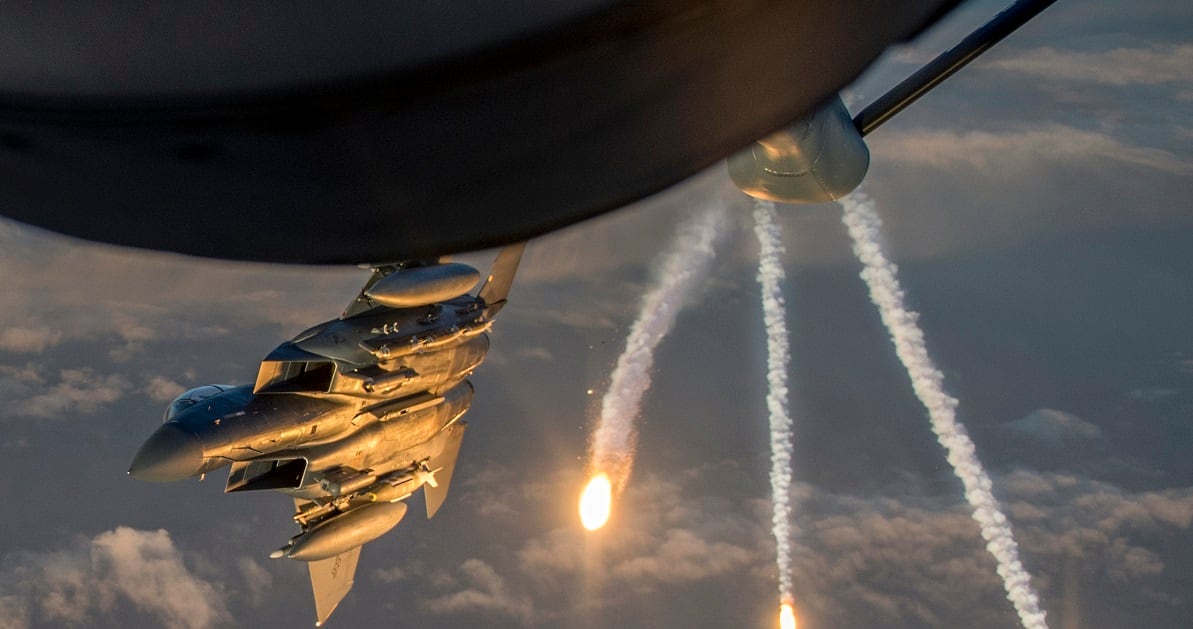The Air Force has spent the past few years gearing up for a near-peer fight against adversaries with high-end air forces that match their own. While new doctrines and technologies occupy much of the planning for such a shift, another type of preparation is needed: reorganizing wings and squadrons.
One possibility on the table is a return to composite wings.
In the early 1990s, the Air Force organized the 366th Fighter Wing out of Mountain Home Air Force Base, Idaho, into the service’s premier “air intervention” composite wing. For roughly a decade, the wing flew fighters, bombers and tankers with the goal of meeting the challenges of a post-Cold War world order — where conflict could arrive anywhere, anytime.
“They were ready to pack up and go fight as a unified team,” Lt. Gen. Mark Kelly, commander of 12th Air Force, told a crowd of Air Force leaders Monday at the 2018 Air, Space and Cyber Conference in Washington, D.C.
“But that was disbanded, and part of it came down to money," Kelly said. "The cost per flying hour of trying to sustain the small-fleet dynamics there didn’t look great on spreadsheets.”
But Kelly argues that financial assessment was faulty. The quality of the training airmen were getting was being compared to the day-to-day operations at other bases around the Air Force. In reality, it was more comparable to the day-to-day training at Red Flag — a two-week, advanced air combat training exercise still held several times a year in Nevada and Alaska.
RELATED

“Frankly, the training they were getting compared more to Red Flag daily ops," Kelly said. “And that would be a good problem to have and a good construct to be able to build.”
The Air Force is rethinking how it constructs wings and squadrons, as well as how it deploys airmen, as it shifts to better align with the 2018 National Defense Strategy, according to Kelly.
As it stands, “airmen only come together to fight at the line of scrimmage," Kelly said.
For instance, before airmen arrive at a forward base to fight against insurgents in Afghanistan, they may have a unified command at the squadron level, but a unified command at the wing level is severely lacking.
Additionally, airmen preparing to deploy today benefit from a surplus of “spin-up" time. They know when their unit is scheduled to deploy and have the luxury of training to meet that challenge well in advance.
“That’s a luxury that we cannot rely on in great power competition,” Kelly said.

Organizing some aircraft and airmen into composite wings could provide the training and deployment structure necessary for fights against modern militaries, Kelly said.
The composite wing concept was heavily pushed in 1991 by then Air Force Chief of Staff Gen. Merrill McPeak, according to his biography on the Defense Department’s website.
McPeak wanted to organize wings by their mission-set, not aircraft type. According to his “air intervention” doctrine, a wing deploying for a near-peer fight should have all the aircraft and airmen it needs to accomplish its mission with limited, or possibly no, outside support.
This meant one wing could potentially operate electronic warfare aircraft for the suppression of enemy air defenses, bombers to lay waste to enemy fortifications, fighters to engage in air-to-air combat, and tankers to refuel them all.
RELATED

After the Sept. 11, 2001 terrorist attacks, however, the old composite squadron idea was mostly discarded. The 366th Fighter Wing was restored to fly F-16Js, and the consolidation of the Air Force’s KC-135 and B-1 forces led to the reallocation of the wing’s bombers and tankers to McConnell AFB, Kansas, and Ellsworth AFB, South Dakota, according to Mountain Home’s website.
But composite wings, and the idea of sustainable fights with more or less autonomous Air Force commanders, is back in vogue.
Funding was one of the biggest challenges to composite wings back in the day, but the reasons for that unit structure are better appreciated now as concerns about China and Russia preoccupy defense planners.
To fuel a restructuring, steady funding will be key, according to Kelly. He projected the Air Force’s shift to great power competition will continue to be a focus of the defense budget into 2021 and 2022.
But regardless of the funds Congress ultimately appropriates for the Air Force in the coming years, restructuring for a near-peer fight needs to happen, Kelly said.
“This has to happen regardless of if we have the force we have today with only one more airman, or the force we need with tens of thousands more airmen," he added.
Kyle Rempfer was an editor and reporter who has covered combat operations, criminal cases, foreign military assistance and training accidents. Before entering journalism, Kyle served in U.S. Air Force Special Tactics and deployed in 2014 to Paktika Province, Afghanistan, and Baghdad, Iraq.




